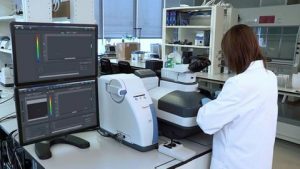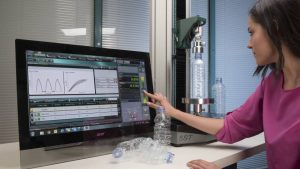Investigate protein secondary structures in biological samples with FTIR spectroscopy
Raman spectroscopy is a molecular analysis technique that has been adopted by industrial, forensic, environmental and research scientists to: • Identify and quantify unknown materials (e.g., Forensic evidence, art restoration) • Understand molecular structure (e.g., crystallinity, polymorphism) • Study spatial relationships between sample components (e.g., failure/defect analysis, depth profiling) Advantages of Raman Spectroscopy You may…
Year End Demo Units Clearance Sales! Save up to 50%!
Do you have an aging FTIR Spectrometer that needs to be replaced?
At its very most basic, laser diffraction is about the relationship between particle size and the angle and intensity of scattered light. Light scatters more intensely and at smaller angles off of large particles than small particles.
We’ve put together some commonly asked questions to give you more information about Fourier Transform Near-Infrared (FT-NIR) spectroscopy. Learn more about the benefits of FT-NIR spectroscopy and how it can help you in your daily QC work.
Date: 7th September 2021 Time: 10.30 am-11.45 am (Malaysia Time) Horiba has recently launched a new imaging accessory (Imaging Unit LY-9610) which allows real-time observation, particle image acquisition, and assessment of the particles in the wet circulation system. It is small and integrated into the main unit – Laser Diffraction Particle Size Analyzer- Partica LA-960V2 without…
Date: 7th September 2021 Time: 10.00 pm-11.00 pm (Malaysia Time) Pharma and biopharma manufacturing are under constant pressure to improve efficiency, increase productivity and reduce costs while still maintaining product quality. Molecular spectroscopy (Fourier transform infrared [FTIR], near-infrared [NIR], and Raman) are versatile, non-destructive, and green techniques that enable rapid analysis of raw…
Here is a list of common test methods used to evaluate plastics. They tell you how to check tensile and flexural properties, stiffness, impact, hardness, flammability, etc. Where applicable, ASTM specs are given as sources for more detailed information.
Microplastics have been found in our oceans, drinking water, and food supply brought about by pollution and manufacturing practices. These particulates can be smaller than the eye can see, and their impact on our environment and our health need to be studied.











